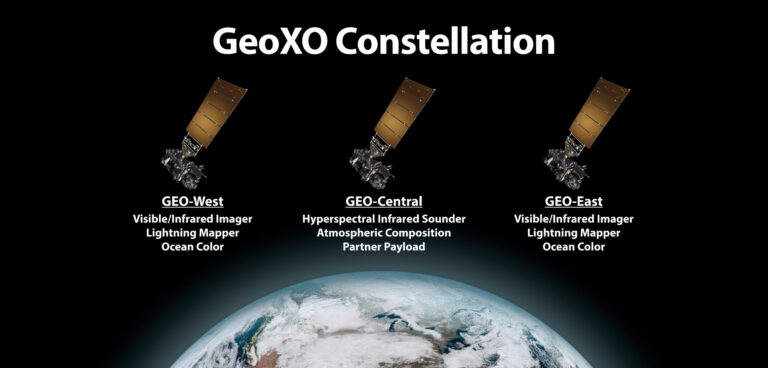NASA, on behalf of NOAA, has selected Ball Aerospace & Technologies Corporation of Boulder, Colorado, to develop the sounder instrument for a geostationary extended observations (GeoXO) satellite program.
This cost-plus-award-fee contract is valued at US$486.9m and includes the build, delivery, spacecraft integration and post-delivery support for one flight instrument, as well as options for additional units. The anticipated period of performance for this contract includes support for 10 years of on-orbit operations and five years of on-orbit storage, for a total of 15 years for each flight instrument.
The contract scope includes tasks and deliverables necessary to design, analyze, develop, fabricate, integrate, calibrate, test, verify, evaluate, support launch, supply and maintain the instrument ground support equipment, and support mission operations at the NOAA Satellite Operations Facility in Suitland, Maryland.
The GeoXO Sounder (GXS) is a hyperspectral infrared instrument, a camera-like device that has many channels to detect wavelengths of infrared light. It will provide real-time information about the vertical distribution of atmospheric moisture, temperature and winds over the western hemisphere. The US National Weather Service will use GXS data to improve weather prediction and short-term forecasts of convection and severe weather. The National Hurricane Center will use the data to improve hurricane track and intensity forecasts.
NOAA and NASA will oversee the development, launch, testing and operation of all the satellites in the GeoXO program. NOAA funds and manages the program, operations and data products. NASA and commercial partners develop and build the instruments and spacecraft and launch the satellites.
It is intended that the system be operational by the early 2030s, when the GOES-R series nears the end of its operational lifetime.



